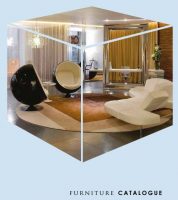“Work ready” graduates are a result of well-designed learning spaces
The price to obtain a three-year degree in the UK is very high. However, research shows that students are leaving university without the basic skills to survive in the workplace. Students are becoming increasingly savvy when making their university selection. Highly considered are the reputation of the university, the quality of the teaching and course content. But in recent times the educational / resource buildings, interiors, and facilities are equally important deciding factors.
If given a choice, do you think today’s students will go for the traditional, old-fashioned learning environments, or opt for more modern surroundings, with open space designs that facilitate mobile learning and interiors and furnishing that stimulate creativity? Learning space plays such an important role in producing work-ready graduates. And it is important for Universities desiring competitive advantage in the market to understand that learning environments help in the bid to make students more work ready.
By converting the traditional classroom into a technology-rich collaborative classroom that is purposefully designed will facilitate a diverse learning experience among the learners in a highly collaborative and engaging manner. Educational establishments such as The University of Wolverhampton in Burnley have already started looking to the world of work when designing their learning spaces. Its new designs have incorporated teaching spaces to reflect the environments their students will eventually work in. Classrooms and lecture theatres are no longer the mainstays of university teaching spaces. Now it’s about more relaxed and informal breakout spaces that support collaborative or individual working.
This is the same with today’s workplace environments. Office interiors aren’t just a sea of desks. They are many types of built in spaces that accommodate the different ways we work and the wide variety of tasks we undertake. From individual work zones, to collaborative spaces that support teamwork, touch-down spaces for those using mobile technology and break-out areas to give employees down time and space to relax. Using soft furnishings across a number of its buildings is one way in which The University of Wolverhampton has created a more professional image. This encourages students to dwell longer and make better use of the university facilities.
As new technologies continue to transform the way students learn and engage with each other, learning spaces must continue to evolve and be designed to cater for new innovative styles of learning. In many cases, the images of classrooms from 100 years ago yield eerie similarities to present day lecture halls; even after so many years of life-changing research and innovation. During the industrial era where students were trained to work in factories, “career readiness” meant preparing for jobs where a worker would spend hours every day performing the same task, often spending his/her entire career at the same company. That is not the case today. The one-size-fits-all, sit-and-get instructional model—where the ability to regurgitate was the key to success—was a sufficient paradigm for that world of work. But that world of work no longer exists.
Check out our project on The University of Liverpool: https://cube7interiors.co.uk/the-foundation-liverpool/


